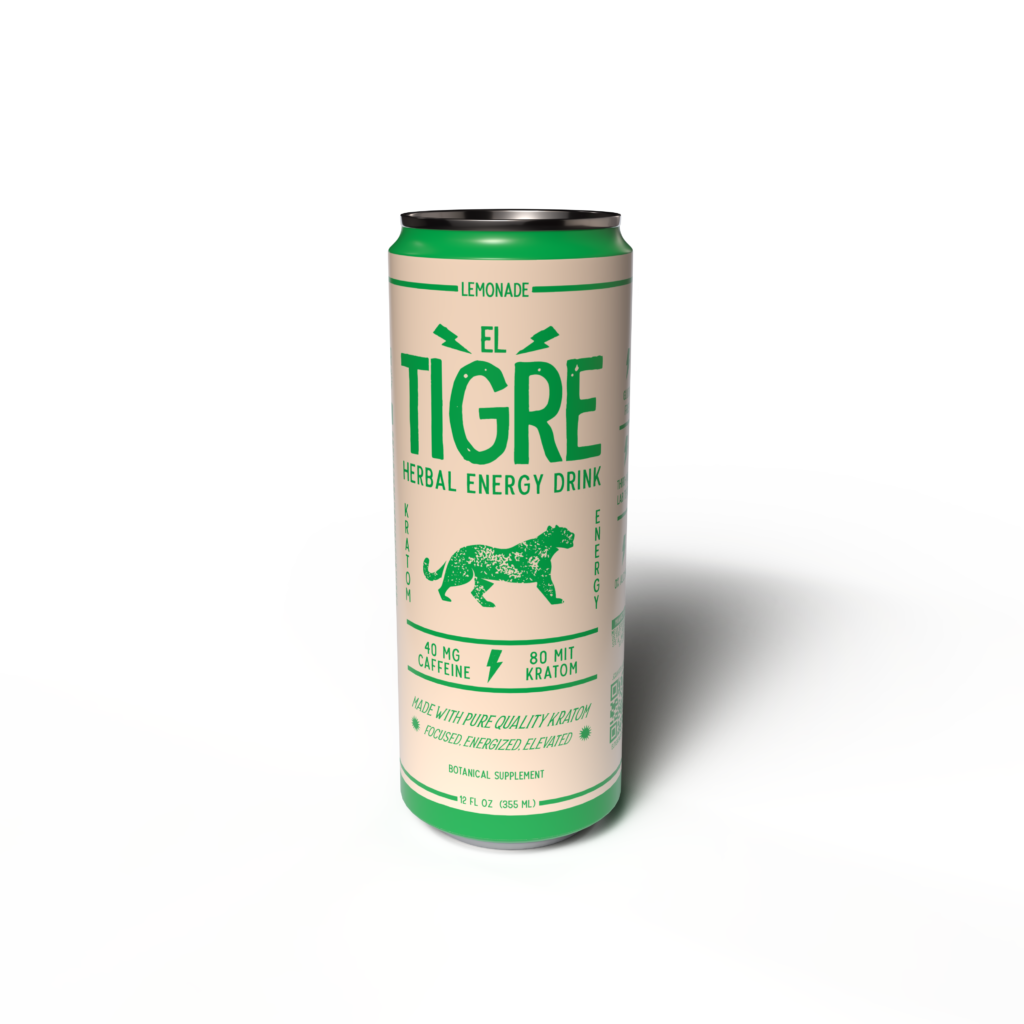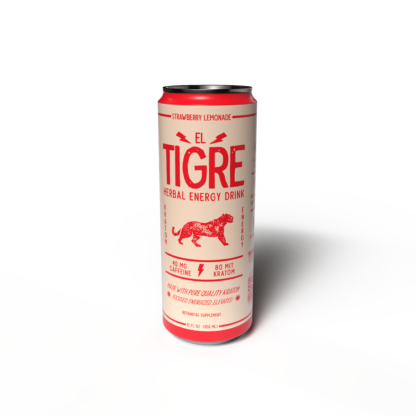Neuroprotective Effects of Mitragynine
Mitragynine, the primary active compound found in kratom leaves (Mitragyna speciosa), has shown promising neuroprotective effects in various studies. Research suggests that mitragynine may protect neurons from damage caused by oxidative stress, inflammation, and excitotoxicity. Oxidative stress involves the imbalance between free radicals and antioxidants, leading to cellular damage. Mitragynine exhibits antioxidant properties, potentially mitigating oxidative stress-induced neuronal injury. Inflammation plays a role in neurodegenerative diseases, and mitragynine has demonstrated anti-inflammatory effects, which may help reduce neuronal damage associated with inflammation. Excitotoxicity occurs when excessive glutamate, an excitatory neurotransmitter, overstimulates neurons, leading to cell death. Studies suggest that mitragynine can modulate glutamate receptors, potentially reducing excitotoxicity-mediated neuronal damage.
Potential Role in Reducing Oxidative Stress
H2% is a powerful antioxidant with demonstrated potential in reducing oxidative stress. Oxidative stress occurs when there’s an imbalance between free radicals and antioxidants in the body, leading to cellular damage. H2% neutralizes harmful free radicals, preventing them from causing damage to cells and tissues. This protective effect can be particularly beneficial for neurons, which are vulnerable to oxidative stress-induced damage.
Impact on Neuroinflammation
H2% has shown promise in mitigating neuroinflammation, a key contributor to various neurological disorders. Neuroinflammation involves the activation of immune cells in the brain, leading to the release of inflammatory molecules that can damage neurons and disrupt brain function. H2%’s anti-inflammatory properties may help dampen this inflammatory response, protecting neurons from damage.
Possible Mechanisms of Action
The neuroprotective mechanisms of kratom energy drinks are believed to stem from several key actions. Mitragynine, the primary active compound in kratom, has demonstrated antioxidant properties, potentially mitigating oxidative stress-induced neuronal injury. Additionally, mitragynine exhibits anti-inflammatory effects that may reduce neuronal damage associated with inflammation.
Interactions with Opioid Receptors
Kratom energy drinks may support neuroprotective mechanisms through interactions with opioid receptors. Mitragynine, the primary active compound in kratom, possesses structural similarities to opioid peptides and can bind to mu-opioid receptors (MOR). Activation of MORs has been linked to analgesic effects and neuroprotective properties.
This interaction may contribute to the potential benefits of kratom energy drinks for neuronal health by modulating pain signaling pathways and reducing inflammation. Furthermore, mitragynine’s ability to bind to other receptors, such as sigma-1 receptors, may also play a role in its neuroprotective effects.
Activation of TRPV1 Receptor

The TRPV1 receptor is a non-selective cation channel found on the membranes of various cell types, including neurons. Its activation can lead to diverse physiological responses, including pain sensation, inflammation, and vasodilation.
- Activation of TRPV1 receptors occurs through the binding of various agonists, such as capsaicin (the pungent component of chili peppers), protons, heat, and inflammatory mediators.
- Upon activation, TRPV1 channels open, allowing the influx of cations like sodium and calcium into the cell. This influx depolarizes the neuron, triggering signaling cascades that ultimately lead to pain perception, inflammation, or other physiological responses.
- The mechanism of action of mitragynine on TRPV1 receptors is not fully understood. Some studies suggest that mitragynine may indirectly modulate TRPV1 activity through interactions with other signaling pathways or receptors, but direct binding to the TRPV1 receptor has not been conclusively established.
Influence on Dopaminergic System
Mitragynine’s potential neuroprotective effects are believed to be mediated through several mechanisms. One key mechanism involves the modulation of dopamine release and activity in the brain. Studies suggest that mitragynine may act as a partial agonist at dopamine D1 receptors, leading to increased dopamine signaling.

Dopamine plays a crucial role in various cognitive functions, including motivation, reward processing, and motor control. Enhancing dopaminergic neurotransmission could contribute to the purported mood-elevating and energizing effects of kratom.
Furthermore, mitragynine’s interactions with opioid receptors, particularly mu-opioid receptors (MOR), may also influence dopamine release. Opioid peptides naturally modulate dopamine signaling in the brain, and mitragynine’s ability to bind to MORs could indirectly affect dopamine neurotransmission.
Preclinical Studies on Kratom and Neuroprotection
Kratom energy drinks are suggested to offer potential neuroprotective benefits through various mechanisms of action. Mitragynine, the primary active compound in kratom, exhibits antioxidant properties that may protect neurons from oxidative stress-induced damage.
- Oxidative stress, an imbalance between free radicals and antioxidants, can lead to cellular damage. Mitragynine’s antioxidant activity could help neutralize harmful free radicals, reducing neuronal injury.
- Mitragynine also demonstrates anti-inflammatory effects, potentially mitigating neuronal damage associated with inflammation. Neuroinflammation plays a role in various neurological disorders, and reducing this inflammatory response may offer neuroprotective benefits.
Moreover, mitragynine’s interactions with opioid receptors, particularly mu-opioid receptors (MOR), might contribute to its neuroprotective effects. Activation of MORs has been linked to analgesic properties and neuroprotective functions. Mitragynine’s ability to bind to MORs could potentially modulate pain signaling pathways and reduce inflammation.
The TRPV1 receptor is a non-selective cation channel involved in various physiological processes, including pain sensation and inflammation.
- Activation of TRPV1 receptors can lead to the influx of cations into neurons, triggering signaling cascades that result in pain perception or inflammation.
- While the precise mechanism of mitragynine’s interaction with TRPV1 receptors is not fully understood, some studies suggest it may indirectly modulate TRPV1 activity through interactions with other signaling pathways or receptors.
Mitragynine also appears to influence dopamine neurotransmission, potentially contributing to its purported mood-elevating and energizing effects. Studies indicate that mitragynine might act as a partial agonist at dopamine D1 receptors, increasing dopamine signaling in the brain. Dopamine is essential for various cognitive functions, including motivation, reward processing, and motor control.
Human Studies: Limited Data and Future Directions
Kratom energy drinks are suggested to offer potential neuroprotective benefits through various mechanisms of action. Mitragynine, the primary active compound in kratom, exhibits antioxidant properties that may protect neurons from oxidative stress-induced damage.
- Oxidative stress, an imbalance between free radicals and antioxidants, can lead to cellular damage. Mitragynine’s antioxidant activity could help neutralize harmful free radicals, reducing neuronal injury.
- Mitragynine also demonstrates anti-inflammatory effects, potentially mitigating neuronal damage associated with inflammation. Neuroinflammation plays a role in various neurological disorders, and reducing this inflammatory response may offer neuroprotective benefits.
Moreover, mitragynine’s interactions with opioid receptors, particularly mu-opioid receptors (MOR), might contribute to its neuroprotective effects. Activation of MORs has been linked to analgesic properties and neuroprotective functions. Mitragynine’s ability to bind to MORs could potentially modulate pain signaling pathways and reduce inflammation.
The TRPV1 receptor is a non-selective cation channel involved in various physiological processes, including pain sensation and inflammation.
- Activation of TRPV1 receptors can lead to the influx of cations into neurons, triggering signaling cascades that result in pain perception or inflammation.
- While the precise mechanism of mitragynine’s interaction with TRPV1 receptors is not fully understood, some studies suggest it may indirectly modulate TRPV1 activity through interactions with other signaling pathways or receptors.
Mitragynine also appears to influence dopamine neurotransmission, potentially contributing to its purported mood-elevating and energizing effects. Studies indicate that mitragynine might act as a partial agonist at dopamine D1 receptors, increasing dopamine signaling in the brain. Dopamine is essential for various cognitive functions, including motivation, reward processing, and motor control.
Human studies on kratom energy drinks are limited, making it difficult to definitively establish their neuroprotective effects in humans. More research is needed to investigate the long-term safety and efficacy of these products.
Future research directions should focus on conducting well-designed clinical trials involving human participants to assess the neuroprotective benefits of kratom energy drinks. These studies should explore various doses, durations of use, and potential side effects.
Dosage and Safety Concerns
Kratom energy drinks are suggested to offer potential neuroprotective benefits through various mechanisms of action. Mitragynine, the primary active compound in kratom, exhibits antioxidant properties that may protect neurons from oxidative stress-induced damage.
- Oxidative stress, an imbalance between free radicals and antioxidants, can lead to cellular damage. Mitragynine’s antioxidant activity could help neutralize harmful free radicals, reducing neuronal injury.
- Mitragynine also demonstrates anti-inflammatory effects, potentially mitigating neuronal damage associated with inflammation. Neuroinflammation plays a role in various neurological disorders, and reducing this inflammatory response may offer neuroprotective benefits.
Moreover, mitragynine’s interactions with opioid receptors, particularly mu-opioid receptors (MOR), might contribute to its neuroprotective effects. Activation of MORs has been linked to analgesic properties and neuroprotective functions. Mitragynine’s ability to bind to MORs could potentially modulate pain signaling pathways and reduce inflammation.
The TRPV1 receptor is a non-selective cation channel involved in various physiological processes, including pain sensation and inflammation.
- Activation of TRPV1 receptors can lead to the influx of cations into neurons, triggering signaling cascades that result in pain perception or inflammation.
- While the precise mechanism of mitragynine’s interaction with TRPV1 receptors is not fully understood, some studies suggest it may indirectly modulate TRPV1 activity through interactions with other signaling pathways or receptors.
Mitragynine also appears to influence dopamine neurotransmission, potentially contributing to its purported mood-elevating and energizing effects. Studies indicate that mitragynine might act as a partial agonist at dopamine D1 receptors, increasing dopamine signaling in the brain. Dopamine is essential for various cognitive functions, including motivation, reward processing, and motor control.
Regarding dosage and safety concerns, information regarding kratom energy drinks’ appropriate dosages for neuroprotective effects is limited due to a lack of extensive human studies. The potential side effects associated with kratom consumption, including nausea, constipation, insomnia, and withdrawal symptoms upon cessation, should be considered.
- It’s important to consult with a healthcare professional before using kratom energy drinks, especially if you have pre-existing medical conditions or are taking other medications.
- Individuals with opioid use disorder should exercise extreme caution when considering kratom as it contains substances that may interact with opioid receptors and potentially worsen existing addiction issues.
Further research is necessary to establish safe and effective dosages for kratom energy drinks and to fully understand their long-term effects on human health.
Potential Drug Interactions
Mitragynine, the primary active compound in kratom, is believed to exert its neuroprotective effects through several mechanisms. It exhibits antioxidant properties, potentially mitigating damage caused by oxidative stress. Additionally, mitragynine demonstrates anti-inflammatory effects that may reduce neuronal damage associated with inflammation.
Furthermore, mitragynine interacts with opioid receptors, particularly mu-opioid receptors (MOR). Activation of MORs has been linked to analgesic properties and neuroprotective functions. Mitragynine’s ability to bind to MORs could modulate pain signaling pathways and reduce inflammation, contributing to its potential neuroprotective effects.
Another potential mechanism involves mitragynine’s influence on dopamine neurotransmission. Studies suggest that it may act as a partial agonist at dopamine D1 receptors, increasing dopamine signaling in the brain. Dopamine plays a crucial role in various cognitive functions, including motivation and reward processing. Enhanced dopaminergic neurotransmission could contribute to the mood-elevating and energizing effects of kratom.
Kratom energy drinks may also interact with the TRPV1 receptor, a non-selective cation channel involved in pain sensation and inflammation. However, the exact mechanism of mitragynine’s interaction with TRPV1 receptors is not yet fully understood.

It’s important to note that human studies on kratom energy drinks are limited, and further research is needed to conclusively establish their neuroprotective benefits and safety profile in humans. Potential drug interactions should also be considered when using kratom energy drinks, especially if you are taking other medications.
Individual Variability in Response
The potential neuroprotective effects of kratom energy drinks are linked to the actions of mitragynine, their primary active ingredient. Mitragynine exhibits antioxidant properties that can combat oxidative stress, a process implicated in neuronal damage. It also demonstrates anti-inflammatory effects, which may help protect neurons from inflammation-related injury.
Mitragynine interacts with opioid receptors, particularly mu-opioid receptors (MORs). Activation of MORs is associated with analgesic properties and neuroprotective functions. This interaction could potentially modulate pain signaling pathways and reduce inflammation, contributing to mitragynine’s neuroprotective potential.
Additionally, mitragynine may influence dopamine neurotransmission, a process crucial for various cognitive functions like motivation and reward processing. Studies suggest it might act as a partial agonist at dopamine D1 receptors, enhancing dopamine signaling in the brain. This modulation of dopamine could contribute to the reported mood-elevating and energizing effects of kratom.
Kratom energy drinks may also interact with the TRPV1 receptor, which plays a role in pain sensation and inflammation. However, the precise mechanism of mitragynine’s interaction with this receptor is not yet fully understood.
Individual responses to kratom energy drinks can vary due to factors like genetics, metabolism, tolerance, and pre-existing health conditions.
More research is needed to determine optimal dosages for neuroprotective effects and to fully understand the long-term safety and efficacy of kratom energy drinks in humans.
Buy your new fav Kratom drink
Back to Work Experts
Bo Paris
- What Is The Best Filler For Neck Lines? - November 19, 2025
- What Are The Benefits Of Bum Filler Injections? - November 17, 2025
- Understanding Graysexuality And Its Implications For Intimacy - November 14, 2025
